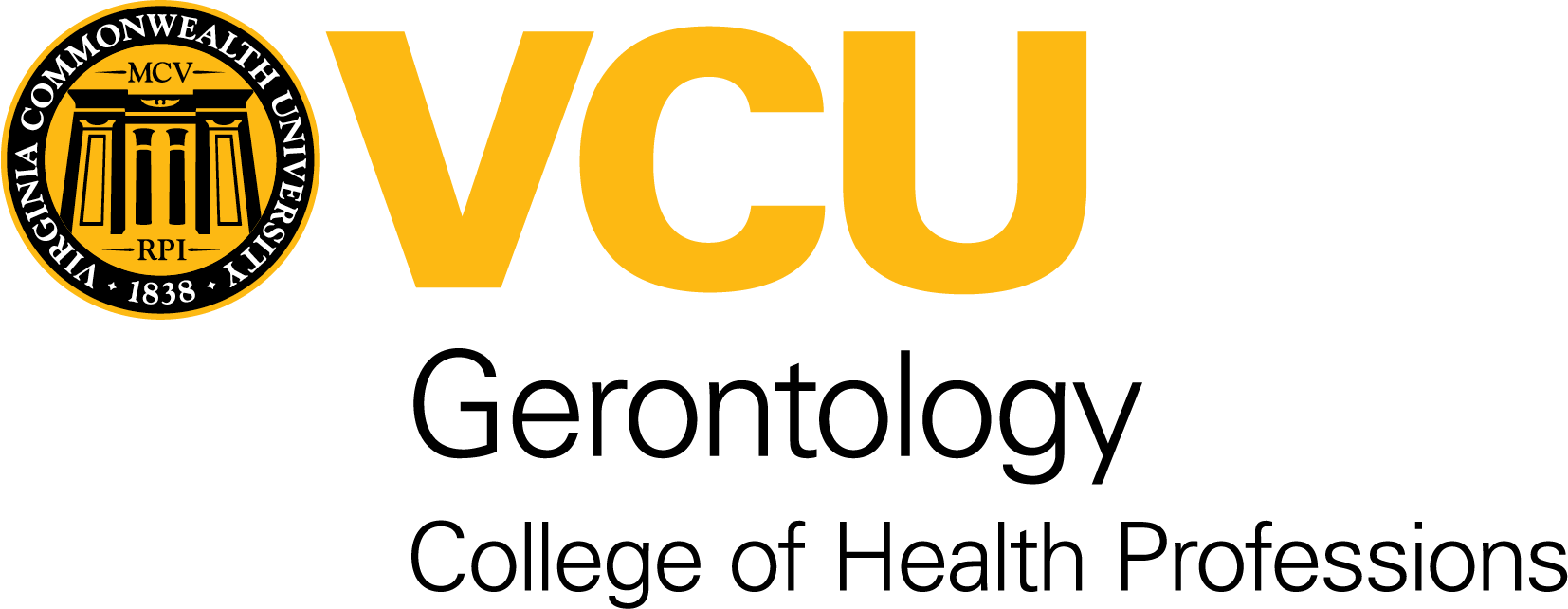Gerontology Boot Camp
A four-part webinar series
developed by the Virginia Commonwealth University’s Department of Gerontology in collaboration with the Virginia Department of Social Services
for professional caregivers working in Adult Day Care settings.
OBJECTIVES
At the end of this training, participants will have an increased understanding of:
-
The biological, psychological, sociological, and spiritual norms of aging.
-
Current trends and research in Gerontology and its application to work in adult day settings.
-
Aging-related stereotypes and myths and ability to identify those which perpetuate ageism
-
How to educate others about normal aging processes.
Part I
Live webinar recorded August 25, 2017, 1:00-2:30PM.
Part II
Click here to review PART II’s recording, slides and handouts.
Part III
Click here to review PART III’s recording, slides and handouts.
Part IV
Click here to review PART IV’s recording, slides and handouts.
CERTIFICATES
Certificates will be available upon attending Part I, reviewing online Parts II, III, IV and passing a quiz on the four-part series.
Review additional information in the FAQ to the right.
FAQ
PART I
RECORDING
SLIDES
Gerontology Boot Camp 1
BIOLOGICAL AGING HANDOUT
QUESTIONS FROM THE AUDIENCE
Annette Kelley: I think it is important to model good language and behavior with our families as well as with our participants. We need to not engage with them in this behavior/language usage but provide gentle redirection. We need to remember that our families are often stressed, frustrated, tired and that’s why they are utilizing our services. We need to help them see the positive attributes of their loved one and help them to a place where they feel better as a caregiver. We may also need to help distinguish the difference between caring for a child and caring for an older individual; there are different ways to talk with both individuals. Centers may also consider focusing a caregiver workshop on this topic, or covering it in a monthly newsletter.
Q: How should we handle situations with the older individuals in our care who are ageist/use ageist language?
Annette Clark:I would remind everyone that we ALL say and do things at times that are ageist and participants will likely have the behavior as well. I want to suggest that most individuals who demonstrate ageist behaviors and or language do not participate in it with malice intent. We change this behavior with education as Annette Kelley mentioned in her response above. Even though there is no “word police”, now that we know what is ageist we have to gently remind or educate others. Especially with the participants I would encourage you not to SHAME them but assist them in changing their behavior when they say or do ageist things. Patience is key. Remember, now that we KNOW better, we must DO better. Be the CHANGE that you want to see!
Have a question for our panelists?
PART II
RECORDING
SLIDES
Gerontology Boot Camp 2HANDOUT
An online version of this handout (which can be saved and re-worked) is available below.Blue Zones Worksheet
PART III
RECORDING
SLIDES
Gerontology Boot Camp 3
ADDITIONAL HANDOUTS
An online version of this handout (which can be saved and re-worked) is available below.PCC Social Engagement
